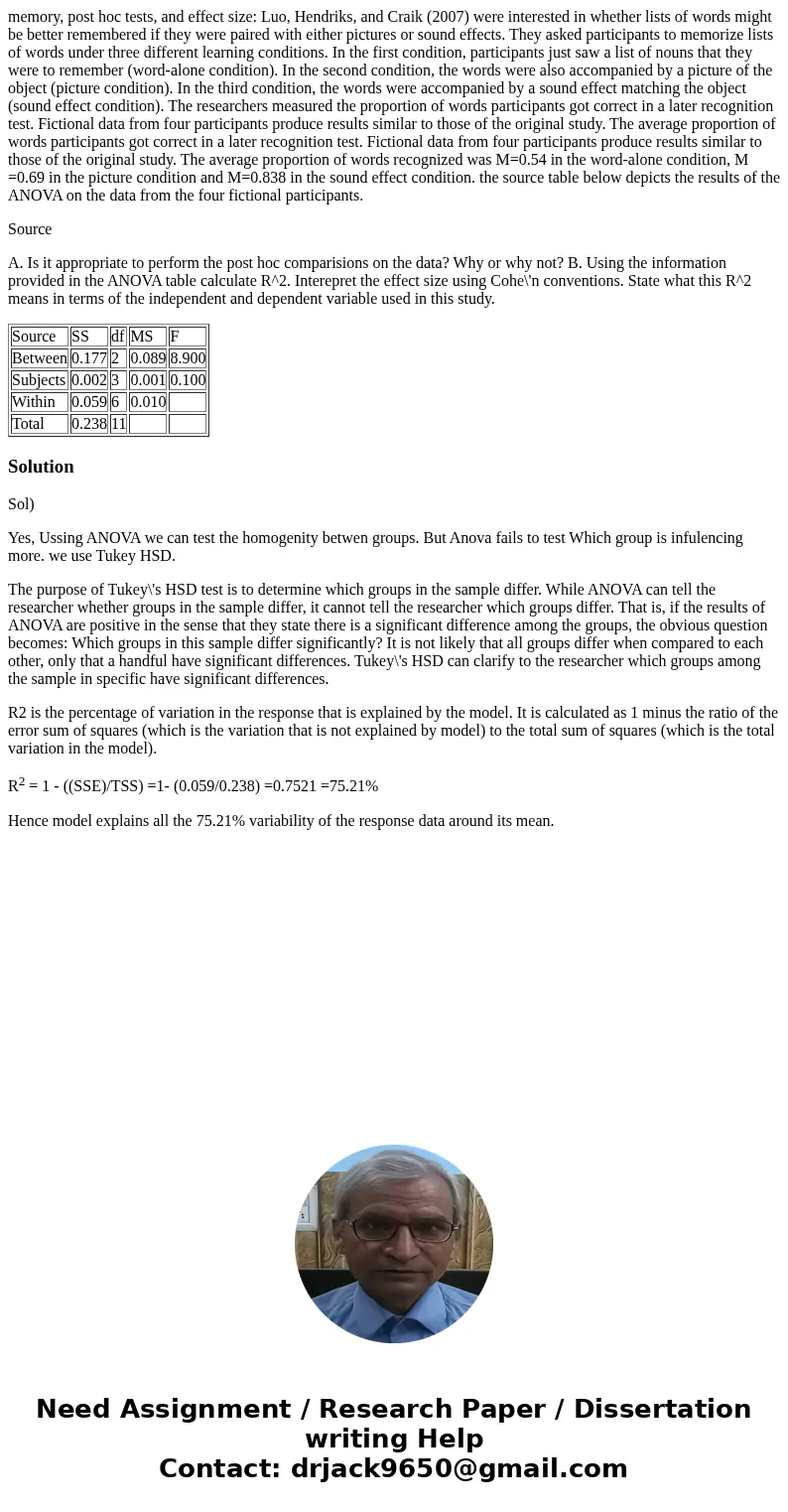memory post hoc tests and effect size Luo Hendriks and Craik
memory, post hoc tests, and effect size: Luo, Hendriks, and Craik (2007) were interested in whether lists of words might be better remembered if they were paired with either pictures or sound effects. They asked participants to memorize lists of words under three different learning conditions. In the first condition, participants just saw a list of nouns that they were to remember (word-alone condition). In the second condition, the words were also accompanied by a picture of the object (picture condition). In the third condition, the words were accompanied by a sound effect matching the object (sound effect condition). The researchers measured the proportion of words participants got correct in a later recognition test. Fictional data from four participants produce results similar to those of the original study. The average proportion of words participants got correct in a later recognition test. Fictional data from four participants produce results similar to those of the original study. The average proportion of words recognized was M=0.54 in the word-alone condition, M =0.69 in the picture condition and M=0.838 in the sound effect condition. the source table below depicts the results of the ANOVA on the data from the four fictional participants.
Source
A. Is it appropriate to perform the post hoc comparisions on the data? Why or why not? B. Using the information provided in the ANOVA table calculate R^2. Interepret the effect size using Cohe\'n conventions. State what this R^2 means in terms of the independent and dependent variable used in this study.
| Source | SS | df | MS | F |
| Between | 0.177 | 2 | 0.089 | 8.900 |
| Subjects | 0.002 | 3 | 0.001 | 0.100 |
| Within | 0.059 | 6 | 0.010 | |
| Total | 0.238 | 11 |
Solution
Sol)
Yes, Ussing ANOVA we can test the homogenity betwen groups. But Anova fails to test Which group is infulencing more. we use Tukey HSD.
The purpose of Tukey\'s HSD test is to determine which groups in the sample differ. While ANOVA can tell the researcher whether groups in the sample differ, it cannot tell the researcher which groups differ. That is, if the results of ANOVA are positive in the sense that they state there is a significant difference among the groups, the obvious question becomes: Which groups in this sample differ significantly? It is not likely that all groups differ when compared to each other, only that a handful have significant differences. Tukey\'s HSD can clarify to the researcher which groups among the sample in specific have significant differences.
R2 is the percentage of variation in the response that is explained by the model. It is calculated as 1 minus the ratio of the error sum of squares (which is the variation that is not explained by model) to the total sum of squares (which is the total variation in the model).
R2 = 1 - ((SSE)/TSS) =1- (0.059/0.238) =0.7521 =75.21%
Hence model explains all the 75.21% variability of the response data around its mean.

 Homework Sourse
Homework Sourse